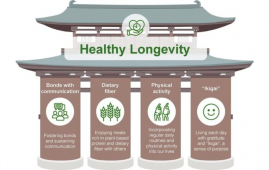

Icahn School of Medicine at Mount Sinai researchers found that the optimal heart rate for fat burning varies for each person and frequently does not correspond with the “fat burning zone” on commercial exercise machines.
The researchers suggested that clinical exercise testing, a diagnostic process that assesses a person’s physiological response to exercise, would be a better resource for assisting people in achieving their desired fat loss goals. The work was published online in Nutrition, Metabolism and Cardiovascular Disease and used a machine learning-based modeling technique. The paper is titled, “Discrepancy between predicted and measured exercise intensity for eliciting the maximal rate of lipid oxidation.”
“People with a goal of weight or fat loss may be interested in exercising at the intensity which allows for the maximal rate of fat burning. Most commercial exercise machines offer a ‘fat-burning zone’ option, depending upon age, sex, and heart rate,” says lead author Hannah Kittrell, Ph.D. candidate at Icahn Mount Sinai in the Augmented Intelligence in Medicine and Science laboratory. “However, the typically recommended fat-burning zone has not been validated, thus individuals may be exercising at intensities that are not aligned with their personalized weight loss goals.”
The heart rate and exercise intensity at which the body burns fat at its maximum rate during aerobic exercise are commonly referred to as FATmax. This intensity may be of interest to people looking to maximize its loss during exercises since it is now a substantial source of energy.
In the study, the heart rate at FATmax, as determined by a clinical exercise test, was compared to anticipated heart rates at various percentages of maximal exertion within the generally advised “fat-burning zone.”
The researchers observed that the measured and anticipated heart rates in a sample of 26 people did not correlate well, with a mean discrepancy of 23 beats per minute between the two measurements. This implies that conventional guidelines for a “fat-burning zone” might not offer reliable advice.
The next phase of research will examine if those who follow a more individualized exercise regimen lose more weight and improve metabolic health markers that indicate the likelihood of developing conditions including type 2 diabetes, obesity, and heart disease.
more recommended stories
 How Soybean Oil Impacts Weight Gain and Metabolism
How Soybean Oil Impacts Weight Gain and MetabolismWhy Soybean Oil May Affect Metabolism.
 New Malaria Prevention Insights From African Biostatistics
New Malaria Prevention Insights From African BiostatisticsHow New Data Is Reframing Malaria.
 Coffee and Cognitive Function: Evidence Review
Coffee and Cognitive Function: Evidence ReviewA new narrative review in Cureus.
 World Summit Outlines Core Principles for Healthy Longevity
World Summit Outlines Core Principles for Healthy LongevityWhy Healthy Longevity Demands a New.
 Colorectal Cancer Screening Rates Low in Adults 45–49
Colorectal Cancer Screening Rates Low in Adults 45–49Recent UCLA research reveals that colorectal.
 Gut Immune Cells and Long-Lasting Antiviral Protection.
Gut Immune Cells and Long-Lasting Antiviral Protection.Breakthrough Findings on How Gut Immune.
 Mild Pancreatic Duct Dilatation Signals Higher Cancer Risk
Mild Pancreatic Duct Dilatation Signals Higher Cancer RiskEarly Structural Changes Offer Critical Clues.
 How the Uterus Senses Force During Labor: New Insights
How the Uterus Senses Force During Labor: New InsightsA new study published in Science.
 Fat-Free Mass and Brain Outcomes in Preterm Babies
Fat-Free Mass and Brain Outcomes in Preterm BabiesEarly Fat-Free Mass May Hold the.
 How Hormones Shape Dopamine-Driven Learning
How Hormones Shape Dopamine-Driven LearningNYU Study on Hormones and Cognitive.

Leave a Comment